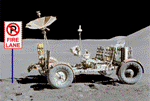Law, College of
Date of this Version
11-1984
Citation
Washington, D.C.: U.S. Office of Technology Assessment, November 1984, xi, 234 p. Report no. OTA-STI-241.
Abstract
After the expenditure of some $200 billion (1984$) since the launch of its first spacecraft in early 1958, the United States has obtained the scientific knowledge and developed the technological capability and professional expertise to succeed in virtually any theoretically possible civilian space venture that it may choose to undertake, But America’s second quarter-century of space activities promises to differ markedly from the first, almost wholly exploratory, era. If space is to be successfully developed in roughly the same fashion as have other, more familiar natural resources and environments, the next stage will be characterized by establishing and securing the capabilities to support routine, operational activities there. In this report, OTA refers to the range of in-space facilities and services that would support such activities as “infrastructure.”
Important steps in the considered development of space have already been taken. By any standard, the satellite communications industry is a great success; its revenues have reached the multibillion-dollar per year level and are growing at an annual rate of 15 percent. Massive launch facilities, expendable launch vehicles, and the space Shuttle now provide routine access to much of near-Earth space; used in conjunction with a global communications network and surface data processing facilities, they provide a sophisticated, though limited, range of services to their users.
Another sign of strength is the maturity of the U.S. aerospace industry. This sector is now beginning to position itself to provide space assets and services independently, and now anticipates conducting some in-space investigations and commercial-industrial activities, privately financed, either on its own or in combination with other business concerns. And other countries now have capabilities to do many things in space—capabilities that continue to grow rapidly.
For years, leaders of the U.S. civilian space community have advanced the view that the next major logical step in space should be the acquisition of specific, permanent in-space infrastructure: a civilian "space station."
In this context, Congress, in July of 1982, asked OTA to undertake an assessment of "Civilian Space Stations;" this report is the product of that request. The OTA assessment was requested originally by the Senate Committee on Commerce, Science, and Transportation, later (in October 1982) by the House Committee on Science and Technology. The assessment was endorsed in August 1982 by the House Committee on the Budget and the Senate Committee on Appropriations. The various committee interests were stated as follows:
-Senate Committee on Commerce, Science, and Transportation: assess the need for a permanent orbiting facility; examine the major technological alternatives and their related costs and benefits; focus on the different space station designs and orbits, the range of feasible applications for the project, the benefits and drawbacks of utilizing existing concepts, the estimated costs for potential missions and design options, and prospective private sector and international involvement.
-House Committee on Science and Technology: undertake an independent, rigorous, balanced study of the need for a space station; address "the hard questions;" not only look at what a station can do that cannot be done better some other way, but also evaluate alternatives to a space station. "In short, the assessment should address and document the real forces driving us to build a space station."
-House Committee on the Budget: estimate the effect of a space station’s cost on the NASA budget and the overall Federal budget; and consider the roles of the Department of Defense, the international community, and the private sector in the development, production, and operation of an inhabitable space station.
-Senate Committee on Appropriations: estimate the relative merits of inhabitable and uninhabitable space platforms; estimate the role automation/robotics can be expected to play in the construction and eventual use of space platforms; and estimate the costs associated with the range of design options.
This assessment has attempted to be responsive to the entire range of congressional interest, with the exception of the interest of the House Committee on the Budget in the role of the Department of Defense.
The report has examined the range of technology required of permanent space infrastructure as well as the broader policy questions arising from NASA’s proposal of a particular constellation of infrastructure elements. Overall, the considered development of space through the paced acquisition of appropriate elements of space infrastructure is a key to maintaining America’s leadership in space. However, because the Nation does not have clearly formulated long-range goals and objectives for its civilian space activities, proceeding to realize the present NASA "space station" concept is not likely to result in the facility most appropriate for advancing U.S. interests into the second quarter-century of the Space Age.


Comments
U.S. government work. Public domain material. Advisory panel includes Carl Sagan, Freeman Dyson, and Frank Stanton, among others. Hard copy available in the Love Library stacks, call number Y3.T 22/2:2 C 49/2.